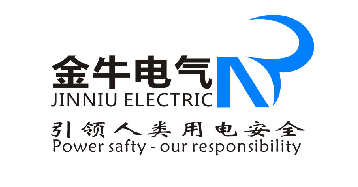
01
Reference voltage of lightning arrester
For any type of arrester, designers in all countries always strive to explore the best arrester characteristics from the following three aspects: they are;
1) Turn on at a voltage value above the normal operating voltage of the system
2) During the action of overvoltage, the voltage value above it changes very little
3) When the overvoltage is lower than a certain voltage value, the conduction is terminated.
From the above three points, the conduction characteristic of the arrester accounts for two points, so the conduction characteristic is the most important and primary characteristic of the arrester. If this characteristic is not good, others are exempted.
The conduction of silicon carbide arrester depends on the gap, that is, when the overvoltage exceeds the breakdown voltage of the gap, the gap will discharge immediately, so the discharge characteristics of silicon carbide arrester are very important.
Zinc oxide arrester has no gap, because it has good nonlinear characteristics, so it does not need gap, so zinc oxide arrester has no discharge characteristics.
Then we will immediately ask: what does zinc oxide arrester rely on to conduct? In short, it depends on its excellent nonlinear conduction.
What is nonlinearity? The non-linearity reflected on the paper is a curve (the linearity reflected on the paper is a straight line). Since it is a curve, it must turn somewhere, so there is at least one inflection point in the curve, and the voltage corresponding to this inflection point is the on voltage of zinc oxide.
The Japanese standard simply refers to this inflection point voltage as the starting action voltage of the arrester, while the IEC standard refers to it as the power frequency reference voltage. After careful study, the name of IEC is not good, which is somewhat mysterious, and the name of the starting action voltage is very direct, which means the conduction voltage of the arrester. This celebrity must be a person who understands the people's feelings.
Because the arrester is allowed to conduct only at a voltage value above the normal working voltage of the system, the conduction voltage (i.e. power frequency reference voltage) should be greater than the normal working voltage of the system, i.e. greater than the continuous operating voltage of the arrester. In addition, since the arrester can withstand temporary overvoltage (i.e. the arrester cannot be turned on during temporary overvoltage), and the rated voltage of the arrester corresponds to the temporary overvoltage, the power frequency reference voltage of this bite should also be greater than the rated voltage of the arrester.
We know that the arrester is essentially an electrical switch. It is disconnected at normal voltage and does not allow the current sent to thousands of power plants to bypass it casually; In case of dangerous overvoltage, the lightning arrester should be released, so it is closed and let the dangerous large current ignite itself. In a sense, the inflection point of the nonlinear curve is also a switch. Before the inflection point, it does not release the amplified current, but after the inflection point, it releases the large current.
Why should the word "reference" be added to IEC standards? Part of the reason is that it is difficult to accurately measure the turning point voltage and corresponding turning point current of the nonlinear curve, because the nonlinear characteristics of zinc oxide arrester is a curve rather than a broken line, there is a clear turning point for the broken line, and the turning point of the curve is also a small section of curve, so it is difficult to determine which point to turn, It can only be said that the curve begins to turn in a small area. Moreover, in the electrical high-voltage measurement, it is also affected by various surrounding factors, which increases the measurement error. Specifically, for the zinc oxide arrester, the inflection point voltage is also affected by the zinc oxide material and processing technology. Therefore, it is more appropriate to add the word "reference".
In addition, even if there is a temporary overvoltage before the turning point, the arrester cannot act, so the turning point voltage can characterize the ability of the arrester to withstand short-term power frequency overvoltage, which is related to the service life and thermal stability of the arrester. Therefore, the turning point voltage has important reference significance for determining the service life and thermal stability of the product, Therefore, it is necessary to add the word "reference".
Finally, let's arrange the various voltages contacted in the arrester in order of magnitude: system rated voltage (phase voltage < line voltage) < continuous operation voltage of arrester < rated voltage of arrester < reference voltage of arrester < residual voltage of arrester.
02
Current carrying capacity of lightning arrester
For any arrester, its main parameters are three: residual voltage, nonlinear coefficient and current carrying capacity.
Any product has the problem of service life. The flow capacity is the ability to characterize how much current the arrester valve plate can pass. Of course, these currents are generated by lightning overvoltage and operating overvoltage. These overvoltage pour the lightning energy and energy in the power system into the arrester valve plate in the form of current to see whether it can withstand it.
When the system voltage is low (220kV and below), most of the energy generated by the operating overvoltage is very low, and the energy attraction capacity (i.e. current carrying capacity) of the arrester is determined by the lightning overvoltage. In addition, in the power system of 220kV and below, there is usually little time for grounding and other lightning protection measures, so the bearing capacity of lightning arrester for lightning wave is increased.
In the test, what method is used to measure the bearing capacity of lightning arrester for lightning wave? Generally speaking, the impulse current with a certain waveform and a certain amplitude passes through the valve plate for several times without damage. This is called the impulse flow capacity test. China's current standard stipulates that the current waveform of this test is 4 / 10 microseconds.
This is because if the lightning falls near the substation, the accident will be serious. The calculation shows that in the most serious case, the lightning current through the arrester can reach the maximum value in 1-3 microseconds, and the amplitude can reach 60kA.
Therefore, the test standard adopts 4 / 10 microsecond impulse current wave, the amplitude is 10, 25, 60 and 100 Ka respectively depending on the level of arrester, and the application times is twice. Such wave acts on the arrester for a short time.
In addition to the above tests, the arrester shall also be tested for long-term current carrying capacity, which is generally called square wave current carrying capacity test or 2ms square wave current carrying capacity test.
This is because the lightning current passing through the arrester often has a long tail, that is, after the main discharge of the lightning current, it is often accompanied by a current with low amplitude but long duration, and the waveform is close to the rectangular wave.
Another reason is that with the development of EHV transmission lines, the harm of switching overvoltage is becoming more and more serious. The waveform of this overvoltage is also close to rectangular wave. According to Chinese standards, the duration of square wave is 2ms, and the amplitude depends on the level of arrester, which are 75, 200, 400, 600 and 800 ~ 1000 a respectively. The application times are 3 times, 1 group, 6 groups and 18 times in total.
03
Charge rate of lightning arrester
First of all, I declare that I don't like the name of charge rate. Lightning arrester is a foreign object, so charge rate is translated by Chinese scholars. I think it's not well translated. First of all, "charged" is not in line with China's habits. It's hard to understand when you read it.
Of course, all other terms in the arrester are only for one thing, such as rated voltage, continuous operating voltage, residual voltage, current, etc., and the charge rate has the word "rate", which means that two things are involved, and the two things need to be divided, which means that the concept of charge rate should be more difficult to understand than other concepts.
Regardless of the word "charged", let's first look at the operation characteristics of zinc oxide arrester in the system, and occasionally insert the word "charged" in the description.
1) Because it has no gap, the working voltage of the system acts on the zinc oxide valve plate for a long time
This is the characteristic of zinc oxide arrester. The valve arrester has a gap, so the system voltage will not act on it, that is, the silicon carbide valve plate is not charged during normal operation. In other words, it is not charged. On the contrary, zinc oxide valve plate (also known as ZnO valve plate, or ZnO resistance plate. We often use these statements alternately below to make you familiar with different statements) is charged for a long time during normal operation, so it will gradually age and even eventually lead to thermal collapse, which is the main factor determining the service life of zinc oxide arrester.
There is also a speed problem in aging. The practice shows that the aging speed of ZnO valve plate depends on the long-term system working voltage, that is, it depends on the long-term charge of ZnO valve plate. In this sense, we can say that the charge is related to the aging of valve plate. The working voltage of the system corresponds to the continuous operation voltage, so the charge is also related to the continuous operation voltage. In order to ensure the service life of ZnO resistance, we must limit its continuous operation voltage.
2) Because it has no gap, the conduction of the arrester depends on the inflection point of the nonlinear curve of the valve plate.
When can ZnO arrester not be charged for a long time? Only after its conduction, and the reference voltage corresponds to the turning point conduction voltage of the arrester. Therefore, in this sense, we can say that the reference voltage is related to the separation of the arrester from "charging". Now let's look at the significance of the charge rate. It is the ratio of the peak value of continuous operation voltage to the reference voltage. The numerator represents charge and the denominator represents "no charge". Because the arrester cannot be turned on under continuous operation voltage, the charge rate is always less than 1.
Finally, let's talk about the name of the charge rate. From the above, we can see that charging is actually pressurization. For Chinese people, pressurization is easier to accept than charging, and the continuous operation voltage has the word "continuous", so it means long-term pressurization. In addition, "rate" means the comparison between the two, so the meaning of charge rate is the ratio of the voltage applied for a long time without conduction (the voltage is relatively small) to the voltage when conduction (the voltage is relatively large).






